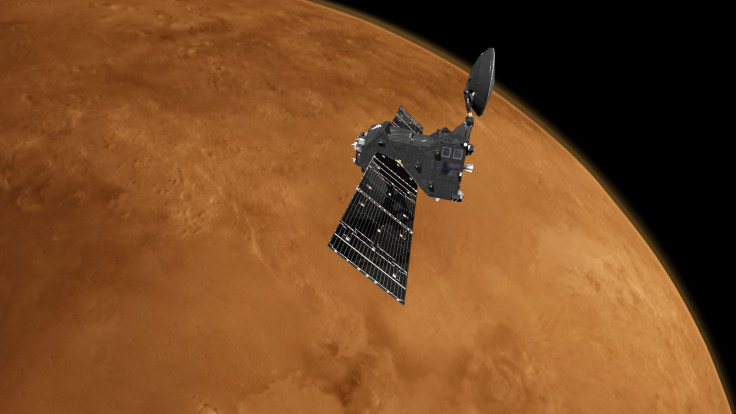ExoMars Orbiter To Make First Scientific Observation Of Mars

The ExoMars orbiter, which arrived at the red planet last month, will begin its first scientific observation later this week, the European Space Agency said in a statement released Friday. The observations, which the Trace Gas Orbiter (TGO) will carry out from its highly elliptical orbit, will provide the science teams at ESA and Roscosmos a chance to calibrate their instruments.
“The main science mission will only begin once it reaches a near-circular orbit about 400 km above the planet’s surface after a year of ‘aerobraking’ – using the atmosphere to gradually brake and change its orbit. Full science operations are expected to begin by March 2018,” ESA said in the statement.
Currently, the TGO’s orbit, which has a period of 4.2 Earth days, brings it roughly 190 miles from Mars’ surface during closest approach, and takes it 69,000 miles from it at its farthest.
“In the upcoming orbits there are only opportunities for pointing towards the horizon or directly at the surface. This will allow the science teams to check the pointing of their instrument to best prepare for future measurements,” ESA said. “There is the possibility that they might detect some natural nightside airglow – an emission of light in the upper atmosphere produced when atoms broken apart by the solar wind recombine to form molecules, releasing energy in the form of light.”
In addition, the Colour and Stereo Surface Imaging System (CaSSIS) on board the TGO will take its first photos of surface features on Mars this week, allowing scientists to identify sources of trace gases.
The ExoMars spacecraft, launched in March, originally consisted of two parts — the TGO, and the Schiaparelli Entry, Descent and Landing demonstrator module. Last month, after a seven-month journey, the TGO successfully inserted itself into an orbit around the Mars, but the lander, which was supposed to make a soft landing on the surface, failed to beam back signals that would have shown that it had done so successfully.
The main objective of the ExoMars mission is to search for evidence of methane — a gas emitted by living microbes on Earth, and traces of which have been observed by previous Mars missions — and other trace atmospheric gases that could be signatures of active biological or geological processes.
© Copyright IBTimes 2024. All rights reserved.






















